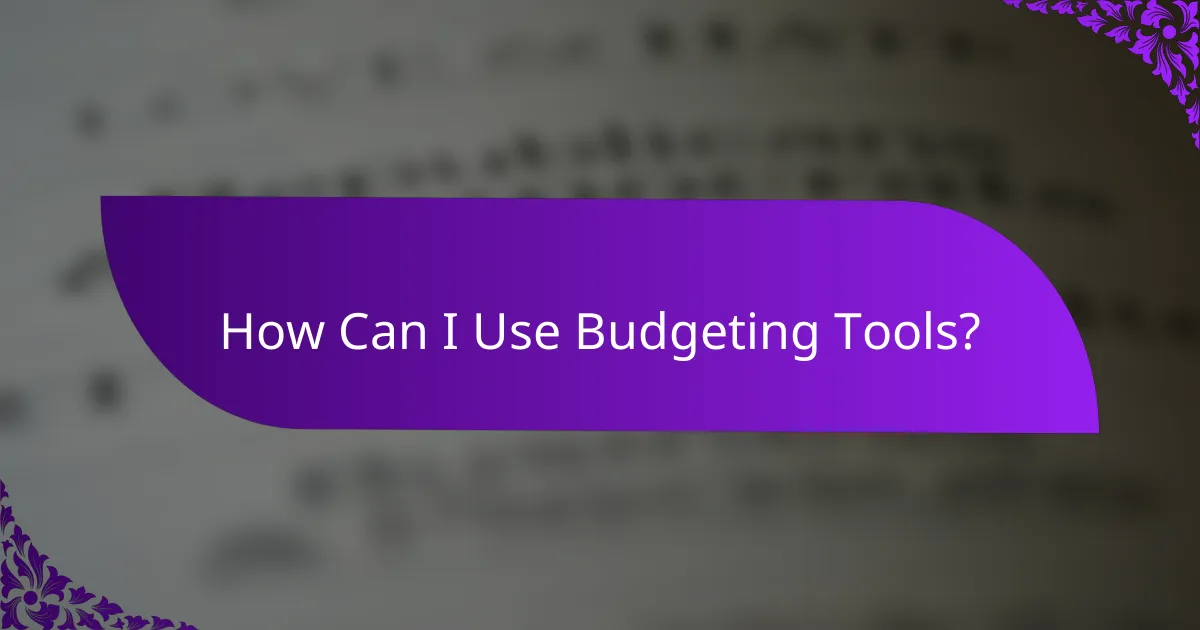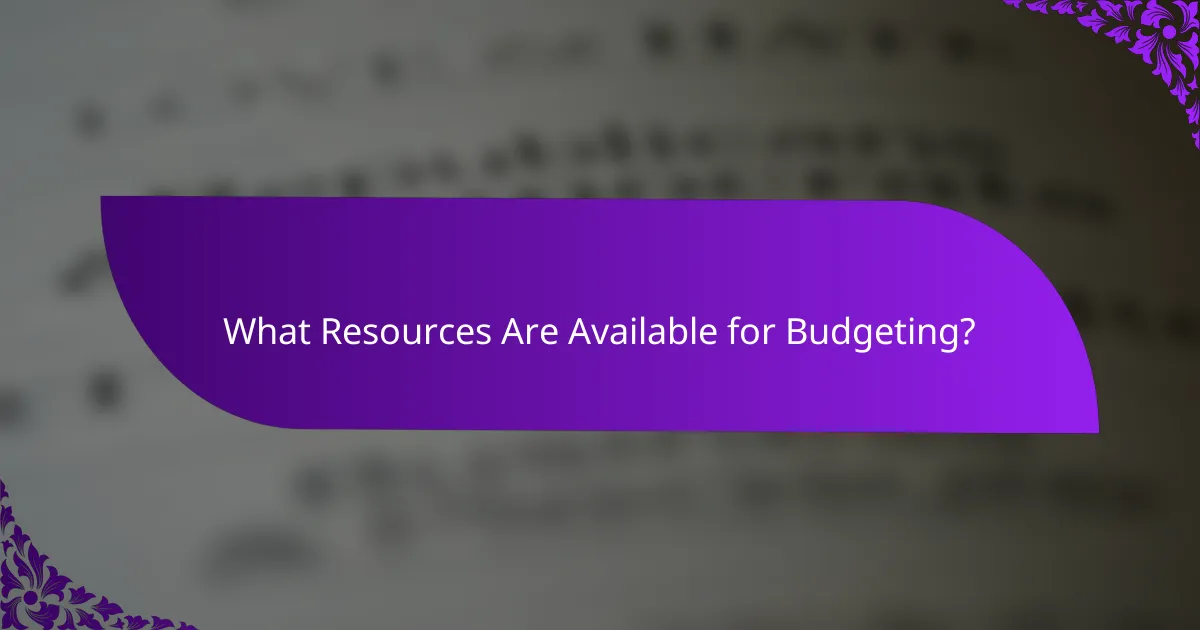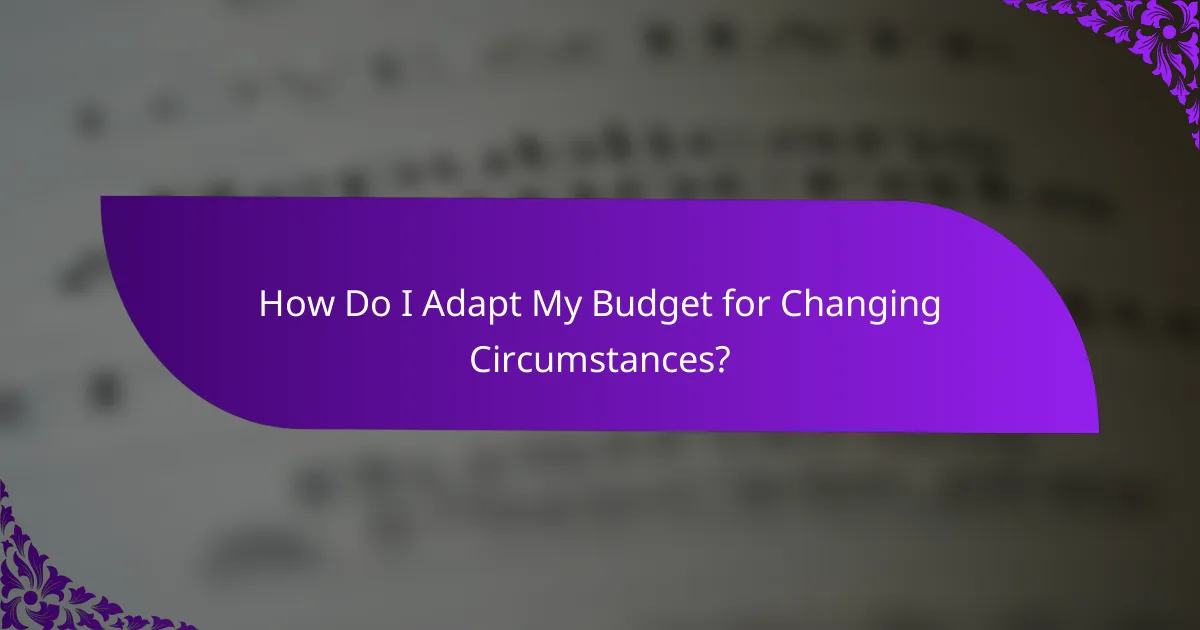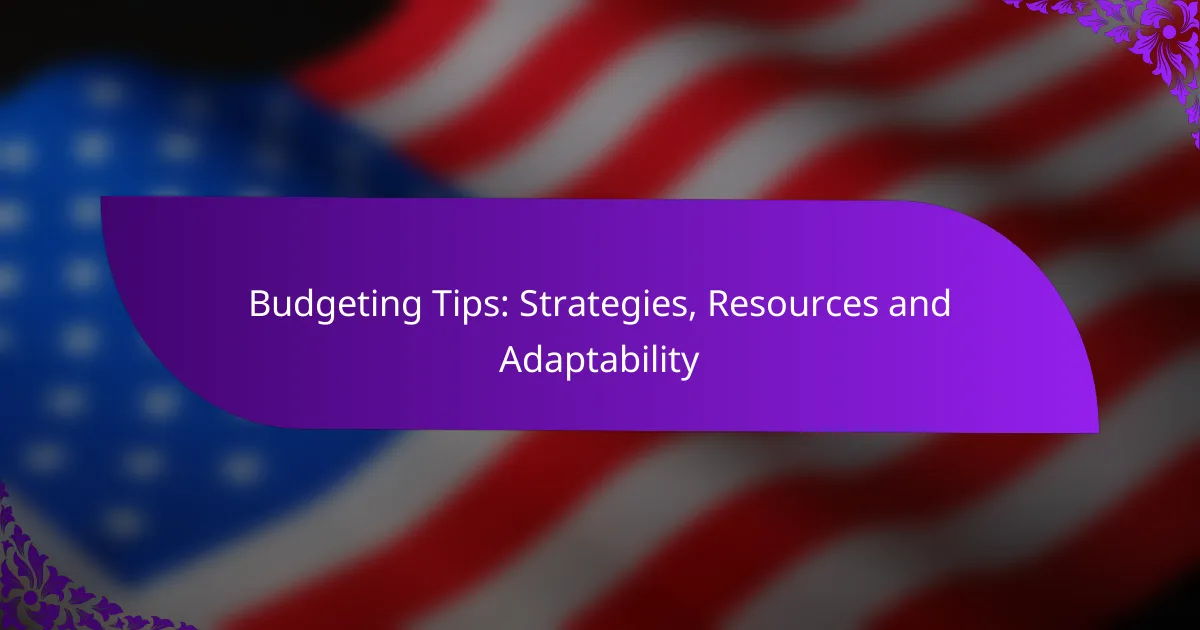Effective budgeting is essential for managing finances, allowing individuals to allocate their income wisely towards expenses, savings, and debt repayment. By utilizing various budgeting strategies and tools, such as online courses and mobile applications, you can enhance your financial decision-making and work towards achieving your financial goals with greater clarity and confidence.

What Are Effective Budgeting Strategies?
Effective budgeting strategies help individuals manage their finances by allocating income towards expenses, savings, and debt repayment. These methods provide structure and clarity, making it easier to achieve financial goals.
Zero-Based Budgeting
Zero-based budgeting requires you to allocate every dollar of your income to specific expenses, savings, or debt repayment, resulting in a net balance of zero. This approach encourages careful tracking of all expenditures and prioritizes essential spending.
To implement this strategy, list all sources of income and categorize your expenses. Adjust your budget monthly based on changes in income or expenses, ensuring that every dollar is accounted for. This method is particularly useful for those who want to gain control over their spending habits.
50/30/20 Rule
The 50/30/20 rule is a straightforward budgeting framework that divides your after-tax income into three categories: 50% for needs, 30% for wants, and 20% for savings and debt repayment. This method simplifies financial planning and helps maintain a balanced lifestyle.
For example, if your monthly income is $3,000, allocate $1,500 for needs (housing, utilities), $900 for wants (entertainment, dining), and $600 for savings or debt repayment. This rule provides flexibility while ensuring that savings are prioritized.
Envelope System
The envelope system involves using physical envelopes to manage cash for different spending categories. Each envelope is designated for a specific expense, such as groceries or entertainment, and once the cash is gone, no more spending occurs in that category.
This method is effective for those who struggle with overspending, as it limits access to funds. To start, determine your monthly budget for each category, withdraw the cash, and allocate it into envelopes. This tactile approach can help reinforce budgeting discipline.
Incremental Budgeting
Incremental budgeting adjusts the previous year’s budget by adding or subtracting a percentage based on expected changes in income or expenses. This method is often used by organizations but can also be applied personally for simplicity.
For instance, if last year’s budget was $2,000 and you expect a 5% increase in expenses, your new budget would be $2,100. This approach is easy to implement but may overlook necessary changes in spending patterns or financial goals.
Pay Yourself First
Paying yourself first means setting aside a portion of your income for savings or investments before addressing other expenses. This strategy emphasizes the importance of prioritizing financial goals and building wealth over time.
To adopt this method, automatically transfer a fixed percentage of your income into a savings account or investment fund as soon as you receive your paycheck. Aim for at least 10-20% of your income, adjusting as needed based on your financial situation. This practice can lead to significant savings growth over time.

How Can I Use Budgeting Tools?
Budgeting tools help you manage your finances by tracking expenses, setting savings goals, and simplifying the budgeting process. Using these tools can lead to better financial decisions and increased savings over time.
Mint for Expense Tracking
Mint is a popular budgeting tool that allows users to track their expenses in real-time. By linking your bank accounts and credit cards, Mint automatically categorizes transactions, giving you a clear overview of your spending habits.
To get started, create an account and connect your financial accounts. Mint will generate visual reports and alerts for overspending in specific categories. Be cautious of relying solely on automated categorization; regularly review your transactions to ensure accuracy.
YNAB for Goal Setting
You Need A Budget (YNAB) focuses on proactive budgeting by encouraging users to allocate every dollar to a specific purpose. This method helps you prioritize savings and manage expenses effectively.
To use YNAB, set up your budget by assigning funds to categories based on your financial goals. The app emphasizes the importance of adjusting your budget as needed. Remember, YNAB requires a subscription, so consider whether the investment aligns with your budgeting needs.
EveryDollar for Simple Budgeting
EveryDollar is designed for those who prefer a straightforward approach to budgeting. It allows users to create a zero-based budget, where every dollar is assigned a role, ensuring that income matches expenses.
To begin with EveryDollar, input your monthly income and allocate funds to various categories. The app offers a free version with manual entry or a paid version that connects to your bank accounts for automatic updates. Keep in mind that the manual entry may require more time but can enhance your awareness of spending.

What Resources Are Available for Budgeting?
Numerous resources exist to assist individuals in budgeting effectively. These include online courses, financial blogs, and mobile applications, each offering unique tools and insights for managing personal finances.
Online Budgeting Courses
Online budgeting courses provide structured learning on financial management principles. Many platforms, such as Coursera or Udemy, offer courses ranging from beginner to advanced levels, often priced between $10 and $100.
When selecting a course, consider factors like instructor credentials, course reviews, and whether it includes practical exercises. Look for courses that offer real-life budgeting scenarios to enhance your learning experience.
Financial Planning Blogs
Financial planning blogs are excellent resources for ongoing budgeting advice and tips. Popular blogs like The Budget Mom or NerdWallet cover various topics, including budgeting strategies, saving tips, and investment advice.
Regularly reading these blogs can keep you informed about new budgeting techniques and tools. Many blogs also offer free downloadable resources, such as budgeting templates, which can be highly beneficial.
Budgeting Apps
Budgeting apps simplify tracking expenses and managing finances on the go. Apps like Mint, YNAB (You Need A Budget), and PocketGuard help users categorize spending and set financial goals, often available for free or with a subscription model ranging from $5 to $15 per month.
When choosing a budgeting app, consider its user interface, features, and compatibility with your bank accounts. Look for apps that provide alerts for overspending and offer visual representations of your financial health.

How Do I Adapt My Budget for Changing Circumstances?
To adapt your budget for changing circumstances, regularly review your income and expenses to reflect any shifts in your financial situation. This proactive approach helps you maintain control over your finances and ensures you can meet your obligations even during unexpected changes.
Adjusting for Income Changes
When your income fluctuates, whether due to job changes, reduced hours, or additional sources of income, it’s crucial to adjust your budget accordingly. Start by identifying the new income level and categorize your expenses into fixed and variable costs.
For example, if your income decreases, prioritize essential expenses like housing and utilities while reducing discretionary spending. Consider setting a temporary budget that reflects your current financial reality, and revisit it regularly as your situation evolves.
Emergency Fund Strategies
An emergency fund is vital for adapting your budget during unforeseen circumstances, such as job loss or medical emergencies. Aim to save enough to cover three to six months of living expenses, which can provide a financial cushion during tough times.
To build your emergency fund, consider setting aside a small percentage of your income each month. Automating transfers to a separate savings account can help you stay disciplined. Avoid using this fund for non-emergencies to ensure it remains intact when truly needed.
Seasonal Expense Planning
Seasonal expenses can significantly impact your budget, especially during holidays or specific times of the year. To manage these costs, anticipate upcoming expenses and incorporate them into your budget ahead of time.
Create a seasonal expense tracker that lists expected costs, such as holiday gifts or summer vacations, and allocate funds monthly to cover these expenses. This approach helps prevent financial strain when these costs arise and allows for a more balanced budget throughout the year.

What Are Common Budgeting Mistakes to Avoid?
Common budgeting mistakes can derail financial plans and lead to overspending. Recognizing and avoiding these pitfalls is essential for effective money management.
Underestimating Expenses
Underestimating expenses is a frequent budgeting error that can lead to financial shortfalls. Many individuals overlook variable costs, such as groceries, utilities, and transportation, which can fluctuate significantly from month to month.
A practical approach is to track your spending over several months to identify average costs. Consider using a budgeting app or spreadsheet to categorize and monitor these expenses, ensuring you allocate sufficient funds each month.
Ignoring Irregular Costs
Ignoring irregular costs can disrupt your budget when unexpected expenses arise. These costs may include annual subscriptions, car maintenance, or medical bills, which are not part of your monthly budget but can add up over time.
To prepare for these irregular expenses, create a separate savings category and contribute a small amount monthly. This way, you can cover these costs without impacting your regular budget. A good rule of thumb is to set aside 10-15% of your monthly income for these unexpected expenses.
